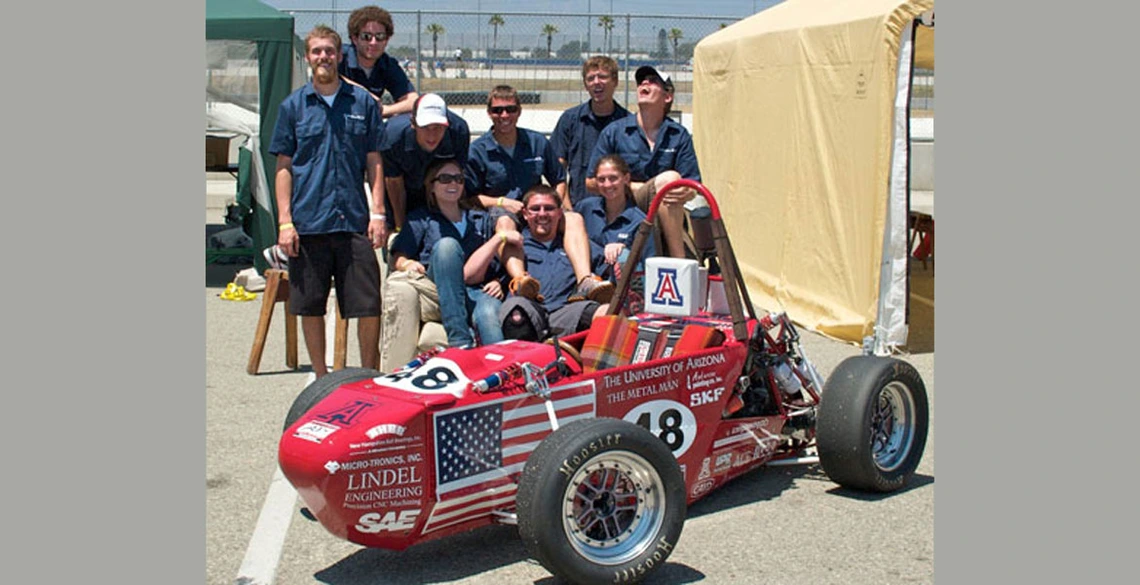UA Formula Race Team Completes Grueling Endurance Race for First Time in Club History
Wildcat Racing, the UA's formula race team, competed recently in a race that tested the solid engineering underlying its car's construction.

The Wildcat Racing team and their car at the FSAE race meet in Fontana, Calif.
Endurance. Seasoned formula race veterans pale at the mention of this test of engineering and durability. It's the final race in a highly competitive student design series. About half the teams registered will make it this far; fewer will endure.
For the first time in the club's history, Wildcat Racing, the UA's formula race team, completed the 20-lap marathon, along with only 29 other teams out of an initial field of 80.
Completing the endurance event is a testament to the solid engineering underlying the car's construction. "It's a 20-kilometer race, and everybody is afraid of it," said Sean Culbertson, team president and mechanical engineering junior. "You can change drivers once, but you can't make any repairs, and the marshals will pull you out of the race if they see any problems."
At the track before the endurance test, the team scrambled to get their car race ready. "We had some problems with the fuel regulator and missed two events, but we managed to come back and do something the club has never done before," said Culbertson, who was also one of the drivers in the endurance event, along with teammate Jon Earnist. Overall, the UA team finished 40th out of the field of 80.
Every year, club members spend two semesters building a racecar from scratch in their shop in the aerospace and mechanical engineering building on Speedway Boulevard in Tucson, Ariz. The race crew at the event included nine of the entire club membership of about 15. "We can always use new members," said Culbertson.
The 80 teams in this year's Formula SAE Collegiate Design Series, which took place June 15-18 at the Auto Club Speedway in Fontana, Calif., hailed from Brazil, Canada, China, India, Japan, Mexico, UK, USA, and Venezuela.
The four-day meet includes "dynamic events" that test different aspects of racecar performance, and "static events" such as reports and presentations. All events are judged by automotive and motorsport experts.
Dynamic events include acceleration from a standing start; autocross, which tests acceleration, braking and cornering on a tight course; and the skid pad, which measures cornering ability.
And then there's the endurance test. After spending a couple of days competing in the other dynamic events, cars have to complete a 20-kilometer marathon, during which acceleration, speed, handling, dynamics, fuel economy, and reliability are all put to the test. Wildcat Racing was one of only 30 cars to cross the finish line of this year's endurance race.
It's not all fun and games whizzing round a racetrack. Students must submit a design report that describes how they use engineering to meet design goals, and a cost report that assumes the racecar will go into production. Presentations require teams to create and deliver a business case to a hypothetical manufacturing firm. Teams must convince this imaginary firm that their racecar design is an ideal fit for the amateur weekend autocross racing market and that the car can be built and sold at a profit.

